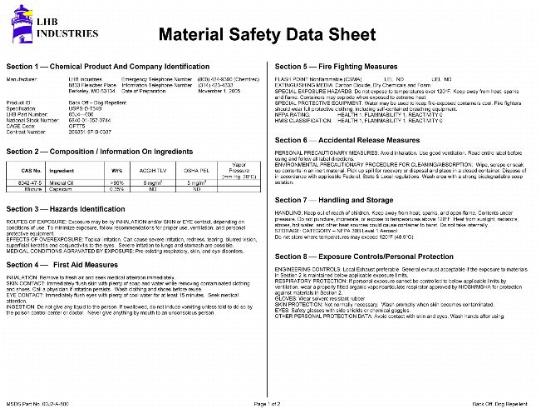Dog repellent is to be used on any dog that attacks, but it does not replace the policy of nondelivery of mail where there is a dog menace. Collection and delivery employees should promptly report to their supervisor the name and address of the customer where such a menace exists. The supervisor must immediately telephone the customer and request that the animal be confined during the usual delivery hours in the neighborhood. The postmaster will inform the customer that no deliveries will be made until this is done. Employees are not to use the repellent where there is a danger of spraying people. Employees who indiscriminately use repellent are subject to appropriate corrective action.
Q. Why is a repellent necessary?
A. Each year Postal Service employees sustain more than 3,000 painful dog attacks and bite injuries, resulting in loss of time from work and costly medical treatment.
Q. When should you use the repellent?
A. Use the repellent only when a dog attacks. Do not use the repellent indiscriminately, especially when there is a danger of spraying children or adults. Indiscriminate use of the repellent will not be tolerated and could result in corrective action, up to and including removal.
Q. How should you use it?
A. Spray the repellent directly at the eyes, nose, and mouth of the attacking dog by pressing the control on top of the container. Direct application must be made. The effective range is up to 10 feet. Effectiveness against trained attack dogs is not established.
Q. What makes the repellent effective?
A. The repellent consists of 0.35 percent oleoresin capsicum (extract of cayenne pepper) and 99.65 percent mineral oil propelled by an inert gas contained in an aerosol spray can.
Q. How does the dog react?
A. Within 10 to 15 minutes, the effect of the repellent will wear off, and the dog will return to normal. The repellent leaves a yellow stain on the dog’s hair, which is removable by washing. This coloration helps identify an animal if a check for rabies is necessary.
Q. How does it affect humans?
A. The repellent produces marked discomfort to the eyes for about 10 minutes, but there are no lasting harmful or damaging effects. People who are inadvertently sprayed with the repellent should avoid rubbing their eyes, face, and other affected areas, and should irrigate the eyes, face, and other affected areas with large amounts of clean water. If it is sprayed on clothing, use commercial spot removers or have the clothes dry cleaned. The repellent itself has a faint, pleasant odor and is mustard yellow in color.
Q. Does it offer any advantages to dog owners?
A. Yes. Many dog owners have indicated that the possible use of the repellent reduces their worries about their dogs attacking carriers and the resulting consequences.
Q. Does the repellent lose effectiveness with age?
A. The repellent is effective indefinitely. However, the propellant may deteriorate over time. Also, after long periods of nonuse, the container’s nozzle might become clogged with dirt, thereby reducing the effective range of the repellent. To avoid this problem, clear the nozzle opening by inserting the tip of a pin into it, then turn the container upside down and briefly press the nozzle until a white mist is discharged. For maximum safety and effectiveness, it is recommended that the repellent be replaced after 2 years (check expiration date on the can). Cans that have reached their expiration date should be disposed of in accordance with local laws and regulations.
Q. Has it been adequately tested?
A. The repellent has undergone extensive laboratory and field tests. Veterinarians have thoroughly examined it and have stated that it is safe, effective, and a very humane method of controlling animals. A Postal Service field test showed the repellent to have a high degree of effectiveness in controlling attacking animals.
Q. Has it been accepted as safe?
A. The repellent has been accepted by the U.S. Department of Agriculture Pesticides Regulation Branch and has been registered by the U.S. Environmental Protection Agency, and bears registration No. 7754-1. It has been registered in all states requiring such registration. The significance of these registrations is that they identify the product(s) as effective and safe.
Q. Were various humane groups aware that the Postal Service experimented with repellent?
A. Yes. The American Kennel Club, the American Humane Association, the Popular Dogs Publishing Company, and the Humane Society of the United States were advised and indicated no objection to the use of the product under the conditions indicated.
Q. How should you handle the container after use?
A. Some residue will remain in the nozzle after use. To expel this residue, simply turn the container upside down and briefly press the nozzle until a white mist is discharged. After using the repellent, make sure to wash your hands to remove any excess residue of the repellent. Touching your face or eyes can cause irritation. First Aid information is on the can.
Q. How should you discard used containers?
A. Empty cans may be discarded in the regular trash. A large number of cans should be disposed of in accordance with local laws and regulations.
Q. How should you handle an inquiry or complaint?
A. If a customer makes an inquiry or complaint, report it to your postmaster or authorized supervisor.


